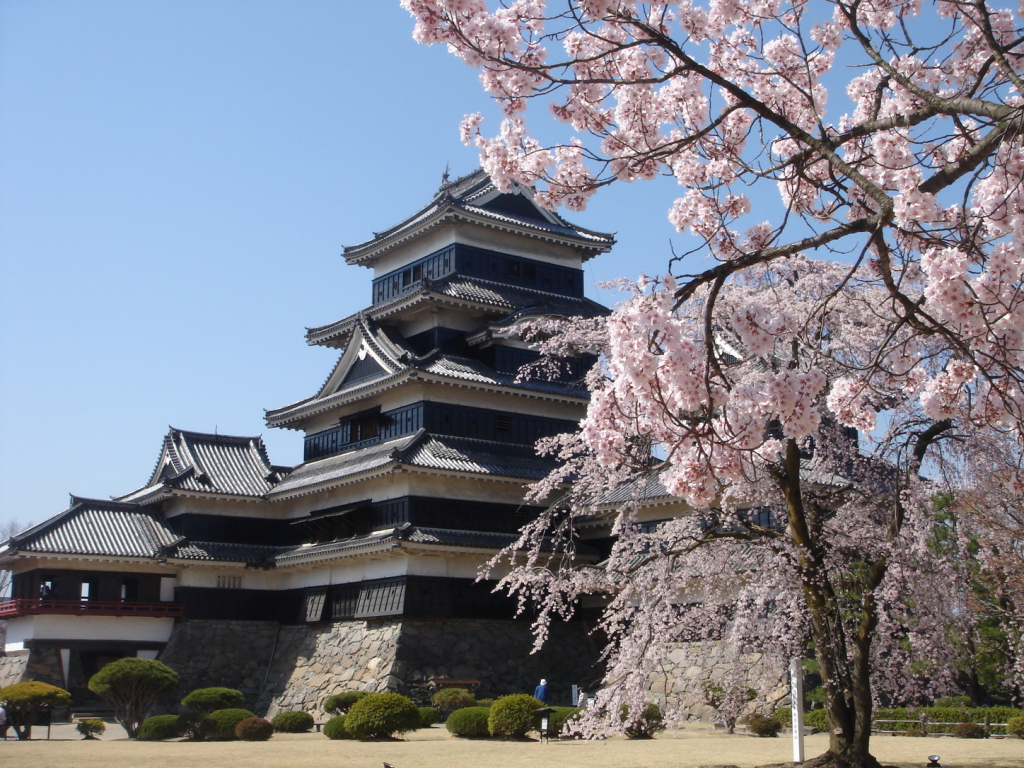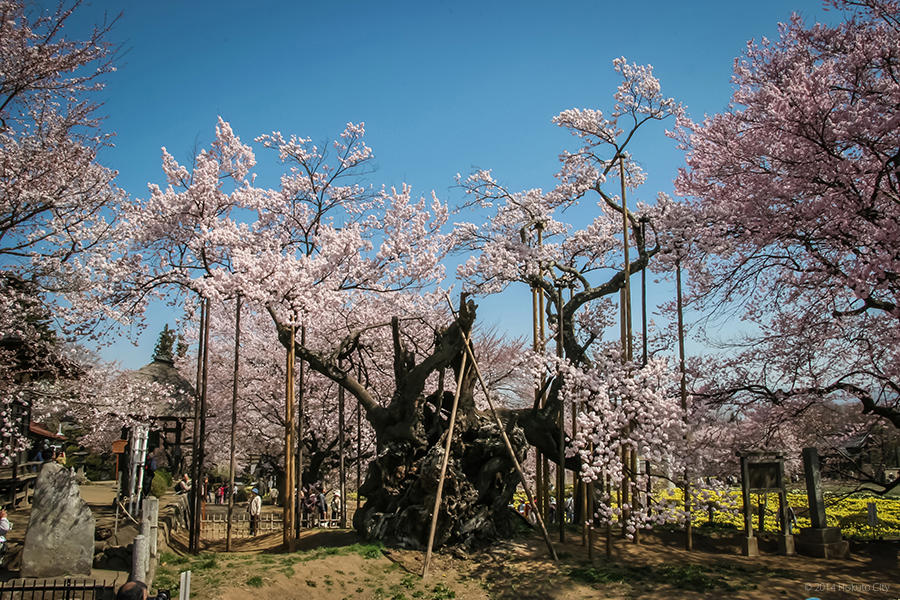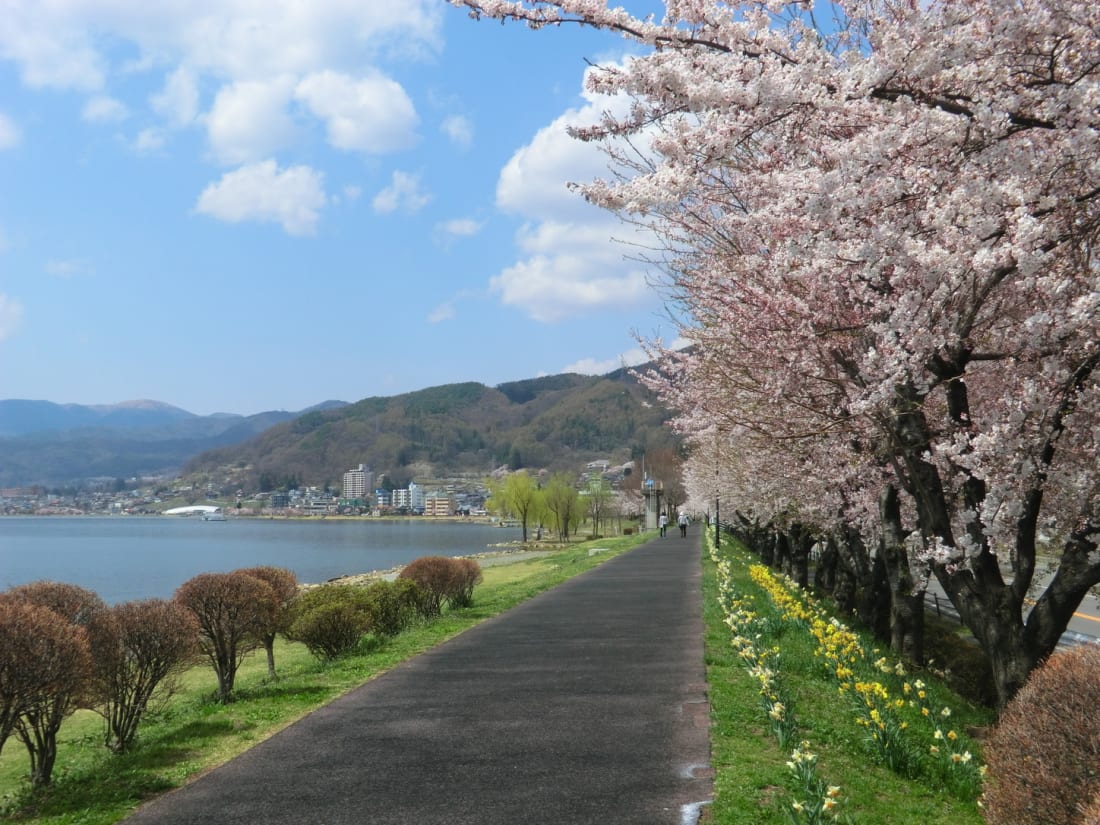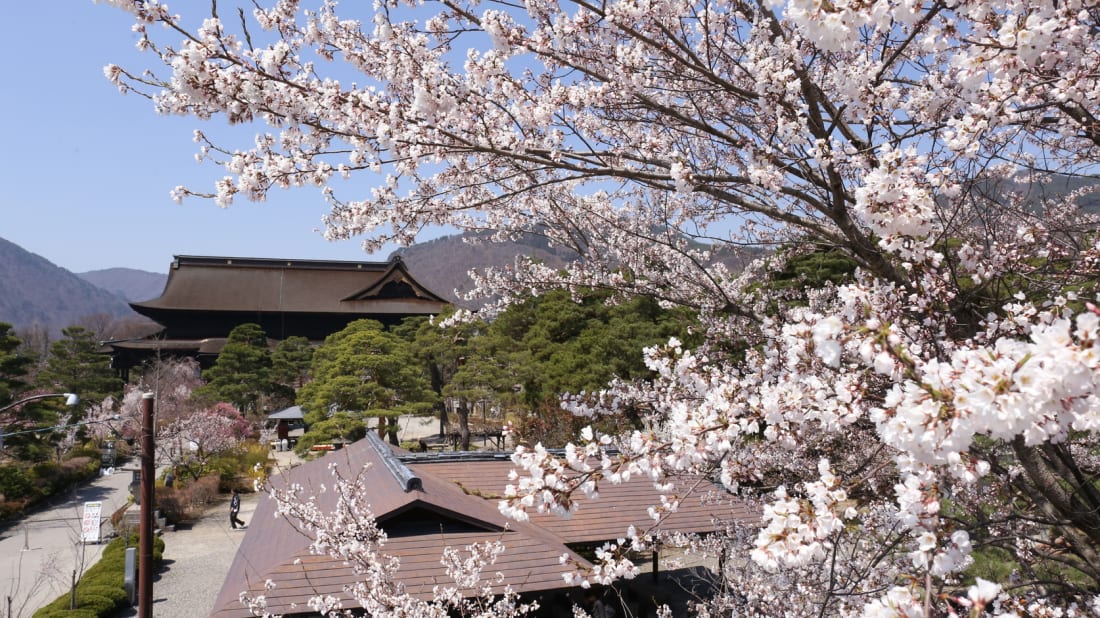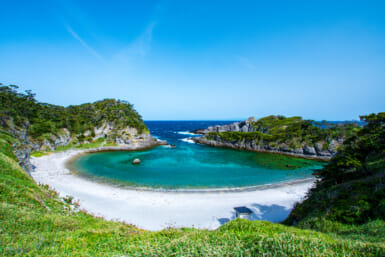Imagine the Swiss Alps covered in cherry blossoms.
While that is a bit of fanciful exaggeration, this spring Japan’s cherry blossom season will be in full bloom in the major mountain chain that bisects the main island of Honshu. Coined the Japanese Alps by English archaeologist William Gowland after they reminded him of the Swiss counterpart, the range’s most beautiful sites and popular tourist destinations are within reach of Tokyo in Yamanashi and Nagano prefectures.
As the Alps’ best cherry blossom-viewing spots are embedded within the mountains, sakura season comes later than Tokyo. The prime time to see the bunches of pink cotton candy trees lasts from the middle of April to early May, depending on the weather and the altitude. So after tipping back a few canned beverages in Yoyogi Park, roll up your blue tarp and head for the hills.
Enjoy the Same Cherry Tree as the Samurai
The first place to stop is the village of Kobuchizawa in Yamanashi Prefecture. This mountain resort town is a favorite among Japanese vacationers for its hiking, horseback riding and scenic train rides. Kobuchizawa is also home to one of Japan’s oldest and most celebrated cherry trees. With its gigantic girth supported by wooden poles, the Dai Ito Sakura Cherry Tree is 400 years old, and is the centerpiece of dynamic views of the Japanese Alps.
Across the border from Kobuchizawa into Nagano Prefecture is the Chino area, home to the archaeological site of an ancient Jomon village known as Tanabatake, located at the southern slope of Mount Kirigamine. The site revealed the vestiges of more than 100 prehistoric houses from the Jomon (3,000–2,000 BC).
Learn about early civilization and the Japanese way of life from that time period. Also see two national treasures – the Jomon Venus and the Masked Goddess. Both clay figurines were discovered during archeological digs, and resemble the famous European Venus of Willendorf.
Head deeper in the mountains to beautiful Shokoji Temple in Tateshina. Enjoy 300 cherry trees in full bloom, and pray at Japan’s only temple devoted to traffic safety (the temple was build in 1970 by Toyota and affiliated companies).
Lakeside Cherry Blossom Excursions at Suwa
Up the road is Lake Suwa, the origination for countless Japanese myths and legends. The lake itself is lined with cherry trees, as well as the banks of the rivers that feed into the lake. Riding a boat on the lake or renting a bike for the day and riding around the 16km path that circumvents the lake are both exhilarating ways to enjoy the cherry blossoms. A 10-minute walk from the lake is Suwa’s castle – Takashimajo. The grounds of the castle are awash in cherry blossoms.
Speaking of castles, about 30 minutes away from Suwa is the city of Matsumoto, which has one of Japan’s oldest and most picturesque castles – Matsumoto Castle, a national treasure. The castle grounds are adorned with cherry blossoms and is an awesome sight in spring. Matsumoto city is full of museums and access to pastoral natural areas – making this a must-visit.
Ninjas and Cherry Blossoms in Nagano
Further north, and on the opposite side of the Alps is Nagano City, the capital of the prefecture. Zenkoji Temple in Nagano and its main hall are a national treasure. This temple was founded 1,400 years ago to honor a Buddha statue, which is now hidden from public view. Once again the grounds of this temple are adorned with cherry blossoms. Just like many of the other places mentioned, it is easy to take in some history along with the beauty of the trees at the same time.
After enjoying Zenkoji Temple and the trees, the city itself offers a lot. Nagano is home to the famous hot spring-bathing snow monkeys and hosted the 1998 Winter Olympics. The city also has some other worthwhile historical sites like the Matsushiro Samurai house and several sites dedicated to ninjas, like the Kids Ninja Village or Ninja Karakuri Yashiki, a full-fledged ninja house in Togakushi.
Access: From Tokyo, the Azusa Express train leaves from Shinjuku Station on the Chuo Line. The train stops at Kobuchizawa, Chino, Suwa and Matsumoto stations. It takes from 90 minutes to 3 hours depending on the destination. Also leaving from Shinjuku is the highway bus that makes the same stops along the Chuo Expressway. For Nagano Station take the Joetsu Hokuriku Shinkansen line from either Tokyo or Ueno stations (approximately 90 minutes). By bus, leave from the Shinjuku bus terminal (approximately four hours).

